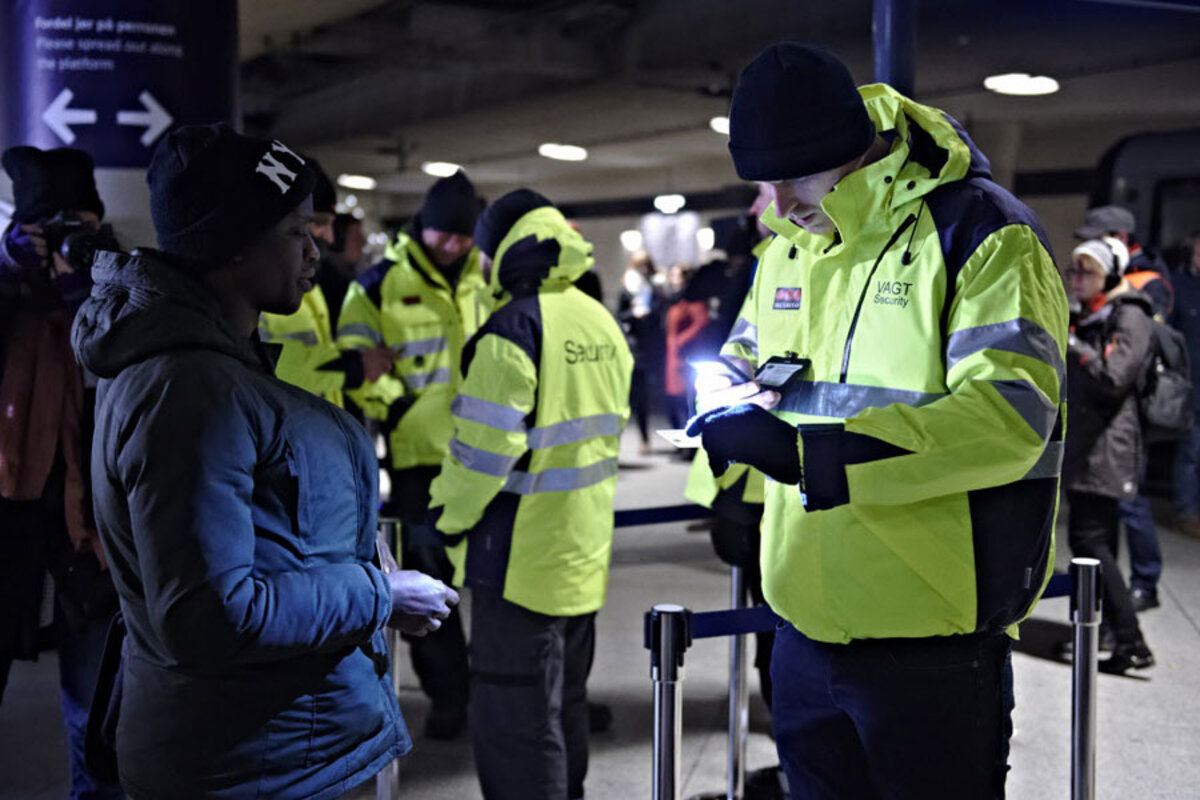Sweden, Denmark impose border controls. New stress on EU openness?
Loading...
The decision by Denmark and Sweden on Monday to enforce tighter border controls presents the latest threat to Europe's system of passport-free travel between countries.
While Sweden warned weeks ago that it would impose border checks, Denmark’s announcement that it would follow suit was more sudden. The moves by the two Scandinavian countries come amid growing concerns about the economic and security risks posed by the tide of migrants.
“We cannot deprive people of their rights to seek asylum,” Danish Prime Minister on Monday, the Associated Press reports. “But we can make sure that those who do not have legal reasons to come to Denmark are turned away at the border.”
Mr. Lokke Rasmussen said the move was in response to the new ID checks introduced by Sweden for all passengers entering the country from Denmark by train, bus, or ferry. Denmark, in turn, is beefing up checks along its southern border with Germany, fearful that it would become the new destination for migrants unable to reach Sweden.
Sweden’s parliament passed legislation that allows its to stay in place for three years, The New York Times reports. The controls in Denmark are scheduled to last for 10 days, with the possibility of extending them for another 20.
The moves were the latest taken by European Union countries to suspend the Schengen agreement, which allows for the freedom of movement across most European Union countries, after 1 million migrants entered the 28-nation bloc in 2015.
Germany’s Foreign Ministry spokesman Martin Schaefer told reporters in Berlin on Monday that the Schengen agreement is "perhaps one of the greatest achievements in the last 60 years." But he added that “it's in danger due to the flow of refugees."
The Swedish government initially had a welcoming attitude to migrants from conflict-ridden countries such as Afghanistan or Syria, ���Ǵ��� reported in September. It sought to set an example for other EU nations to follow but grew frustrated as that failed to happen. Sweden started to reverse course after more than 160,000 migrants applied for asylum in 2015, the highest number in Europe except for Germany.
EU rules allow governments to temporarily reintroduce border checks within the Schengen zone if they argue that their national security is at risk. As the Monitor reported last year, many observers and EU leaders don’t see Schengen as the root problem.
Rather, they view it as a symptom and a scapegoat. The system seen in greater need of repair is the so-called "Dublin regulation," a policy that mandates asylum seekers to register in the first EU country that they enter.
But it is borderless travel that’s come most under fire this year, and not just from the migration crisis. The question of European jihadis, who can travel freely from their home countries around the Schengen zone, has fueled many to ask whether its benefits outweigh the risks.
Sweden and Denmark’s new border controls have led German and EU leaders to reiterate the need for a pan-European agreement on how to control the movement of migrants across borders. Germany temporarily imposed border checks of its own on its frontier with Austria in mid-September, but Chancellor Angela Merkel's spokesman, Steffen Seibert, said .
“We need an overall European solution,” Mr. Steffen said Monday, according to the AP. “The solution won't be found at national borders between country A and country B."




